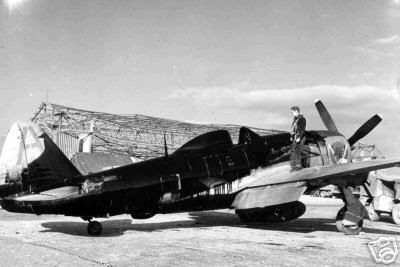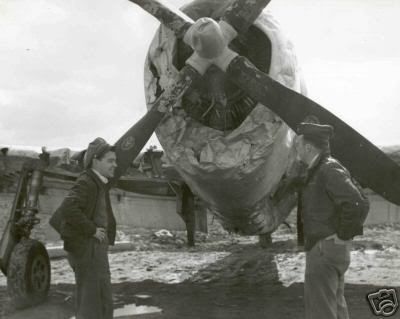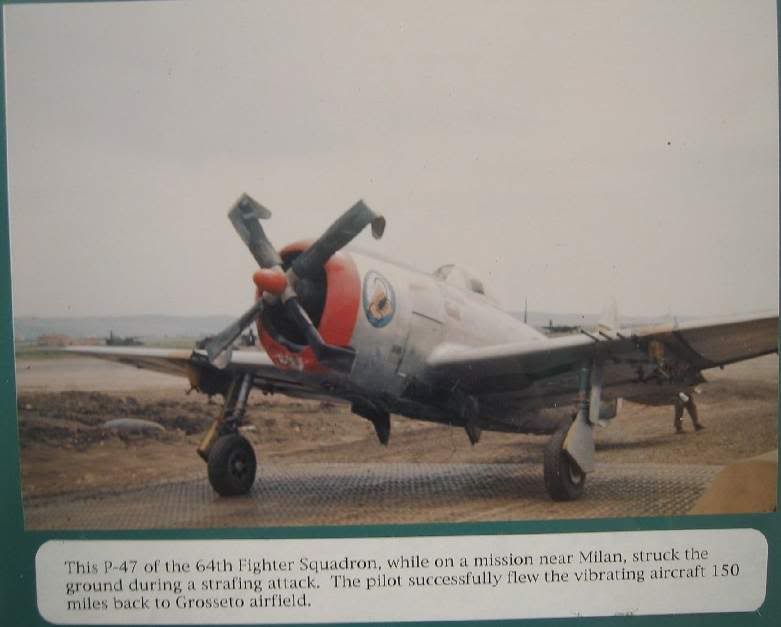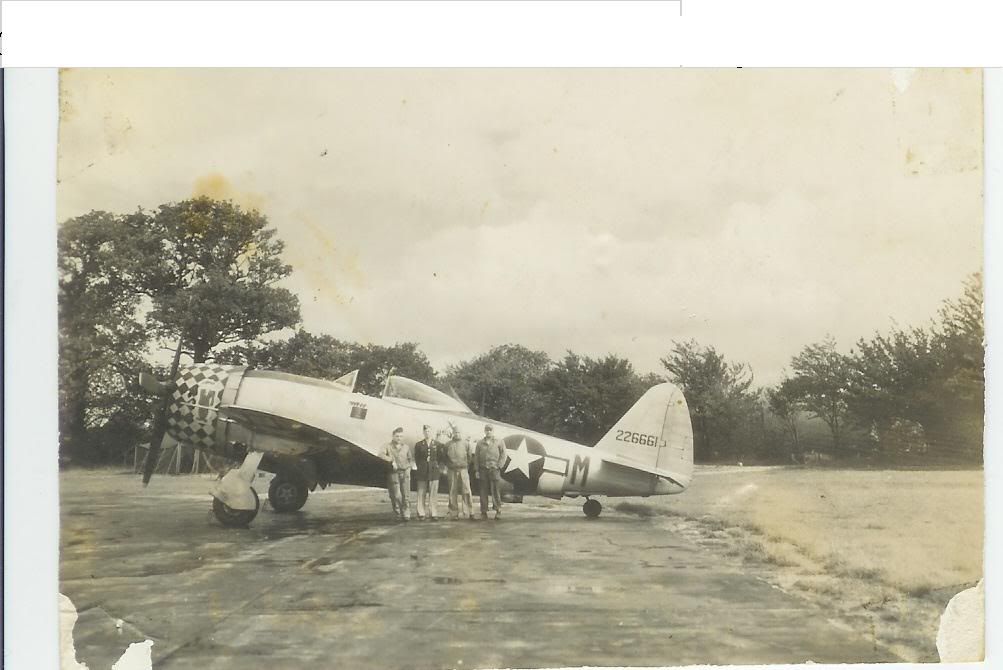A little bit about US versus Japanese aircraft in WW2
Posted: Sat Sep 15, 2012 10:36 pm
There was some discussion in the thread In Your opinion, which is the best battle rifle ever made? Regarding Japanese and American aircraft and also the heavy .50 caliber Browning machine gun, compared to other nations, which used rifle caliber machine guns and/or 20mm cannon in their aircraft. I would like to place some brief views on these subjects here. I did not want to clutter up the thread and digress with unrelated comments, but, of course, anyone is free to dive in here and share their own insights and views.
The Browning .50 caliber machine gun was developed after WW1 as a long range infantry weapon. In the 1930s, the US Army Air Corps (predecessor to the US Air Force) began using them in aircraft, valuing them for their increased range and hitting power over the .30 caliber machine guns then in use.
The Browning .50 caliber machine gun is so reliable a weapon that it is still in first line service with US troops to this day. This underlines the weapon's effectiveness, flexibility, and reliability. I have not shot a .50 personally, however, my brother, who had the opportunity to shoot them in Vietnam and also had ready access to a BAR assured me that it was quite possible to saw down a house with a .50.
The early US development of the .50 as a long range battlefield machine gun did anticipate certain situations earlier and more competently than other nations. The British and the Soviet Union stood pat with their .30 caliber machine guns, and the Germans, who had a slight edge with their 8mm caliber, pursued a different course for their infantry, basing the squad around a pair of light weight rapid fire MG 34 or MG 42 machine guns. This was ultimately proved to be the way to go regarding the infantry, but I'm concerned about aircraft in this post.
The Japanese and Italian forces were at the greatest disadvantage, because their military rifle rounds were 6.5mm caliber. Before the war, to get a harder hitting bullet with longer range, both nations introduced a larger ~.30 caliber round. Neither nation had fully equipped its forces with the new caliber weapons, but the point I make here is that for aircraft, the availability of a strong, hard hitting, long range heavy machine gun of unparalleled reliability was a big advantage.
For most national forces, the only direction for increased hitting power and range for aircraft beyond rifle caliber weapons was to use a 20mm cannon (or even larger). However, this upgrade path was not without its drawbacks. A 20mm cannon, regardless of the design used, is heavier than a machine gun, so fewer can be carried aboard an aircraft. Most 20mm cannon are slower firing than either .30 or .50 caliber machine guns. Some 20mm designs used a lower velocity round, somewhat like the 7.62x39 might be to the original full power 7.62x54r. A lack of velocity exacerbated aiming and hitting the target in fast moving aircraft, and diminished the range advantage the larger projectile offered.
Here, I'd like to make a note: The chief Japanese fighter used by the Navy and most often faced by Americans was the famous Mitsubishi Zero. There can be no doubt that the Zero was a very capable design, with tremendous maneuverability and great range. The Nakajima Sakae 1710 cubic inch radial engine had the peculiar ability to be run at very lean mixtures, which permitted the Zero to fly over 1000 miles without refueling, a distinct advantage over the wide Pacific battlefield. (Undoubtedly, this was due to a design which permitted superior fuel distribution between cylinders.)
The Zero's main competition at the beginning of the naval war was the F4F Wildcat. It was powered (in the early Grumman versions) by a Pratt & Whitney R-1830 radial. Perhaps the only radial engine to exceed the R1830 in reliability was the later R-2800 that powered the succeeding F6F Hellcat (and the Corsair and Thunderbolt, among other aircraft). However, the Wildcat was heavier, slower to climb, and less maneuverable.
The Zero had a pair of 20mm cannon, making it the only fighter that could competently deal with American heavy bombers like the B17 and B29 (rifle caliber bullets really couldn't bring down a Flying Fortress without a lot of luck), and a pair of 7.7mm machine guns.
The Wildcat had four .50 caliber machine guns.
While the Zero was a very light aircraft, it had no armor or self-sealing fuel tanks. The Wildcat had both, and was a very tough aircraft.
The problem here is the whole philosophy behind the Japanese method of waging war: They favored a small, highly trained group of warriors, samurai-like, to strike quick, hard, and decisive blows. The Zero was a samurai's weapon, made to dominate individual combat with other aircraft. The Japanese pilots were trained in a very offensively minded way. Most did not wear a parachute, considering the extra weight to be a hindrance to their aircraft's performance.
However, the days of aerial combat being a collection of individual dogfights had ended, even before WW1 was over. The new method was to dive, slash, and break away from combat. for this kind of fighting, something like the Messerschmidt Me109 was made to order, not the maneuverable Zero.
The Wildcat did take a pounding at the beginning of WW2, but it was not the "dog" some would have you to believe. Once the Americans began to analyze the Japanese equipment and tactics, they began to devise countermeasures, such as the "Thatch Weave." The capture of an almost intact Zero in the Aleutian Islands (part of the Battle of Midway) sealed the Japanese air effort's fate. The rebuilt Zero was recovered, rebuilt, flown, and analyzed by the Americans, who fed the data into the design for the Wildcat's successor, the F6F Hellcat.
Well before the war, the Americans had built two large radial engines, the Wright R-2600 and the Pratt & Whitney R-2800, of 1700 and 2000 hp, respectively. The Allison was a great design, but hampered by the deletion of turbochargers, which was part of the design intent. (Tungsten, a key element in high temperature turbine blades, was mostly available in Germany, and was a strategic material in the USA. Thus, turbochargers were usually allotted to bombers.) In the P38 Lightning, where the turbochargers were included, the performance was outstanding. In installations where they were deleted, high altitude performance was substandard. This was rectified by substituting Packard-built British Rolls Royce Merlins, most famously in the P51 Mustang.
The Japanese efforts to build successful large fighter engines was less successful, and while all of the fighter aircraft the US Army Air Force fielded in World War 2 were under development before Pearl Harbor (Corsair, Mustang, Hellcat, Lightning, Thunderbolt, etc.), the Japanese really didn't get serious about developing a fighter to match the new American fighters until it was too late.
The Germans had somewhat better fighter aircraft, and although the Me 109 was a very dated design by war's end, the Germans were able to update it more successfully than the Japanese. This is because they had powerplants (ultimately, the Daimler Benz DB 605) to furnish sufficient power. So, where the Japanese ran out of power with the Zero (the A6M5 variant had increased firepower to deal with the new Hellcat, but the added weight limited the Zero's speed, maneuverability, and climb), the Germans ran out of wing The 109 was a small aircraft, and only a few weapons were able to be mounted on it. In the end, the Germans resorted to larger caliber cannons, but a larger aircraft was really the answer.
Where the Japanese idea of war would be a quick, small strike by highly trained elites whose successes would cow the Americans into acquiescence of Japanese hegemony in the Western Pacific, the Germans bumbled around with internal politics and warfare, behavior which stifled the Fw190 and Me262 until it was too late. Essentially, the Germans had good ideas, technology, and engineering skills, but their leaders were not examples of the "master race" theories they propounded.
While technical issues certainly played a factor in the air war of WW2, I still feel this whole subject boils down to the same issue as simple hunting: The gun is a factor, maybe even a large one, but the main factor is who is behind the rifle pulling the trigger. The highly skilled Japanese and German aviators achieved spectacular successes and racked up incredible kill scores, but the individual performances were not the determining factor. Rather, the competent performances of large numbers of American aviators, who were trained by combat pilots who rotated back to prepare recruits for the aerial battlefield, proved to be the winning formula.
In essence, the Americans would have defeated Japan with Wildcats -- the cream of Japanese aviation went down at Midway, when the Wildcat was still the first line fighter. It would have been tougher and a longer road, but the entire Japanese situation was not prepared or able to deal with a long war of attrition. Their Admiral Yamamoto had warned of this before the decision was taken to attack West and South, rather than pursue a land war to the east and north. Anyone who objectively viewed the situation would have come to the same conclusion.
The Browning .50 caliber machine gun was developed after WW1 as a long range infantry weapon. In the 1930s, the US Army Air Corps (predecessor to the US Air Force) began using them in aircraft, valuing them for their increased range and hitting power over the .30 caliber machine guns then in use.
The Browning .50 caliber machine gun is so reliable a weapon that it is still in first line service with US troops to this day. This underlines the weapon's effectiveness, flexibility, and reliability. I have not shot a .50 personally, however, my brother, who had the opportunity to shoot them in Vietnam and also had ready access to a BAR assured me that it was quite possible to saw down a house with a .50.
The early US development of the .50 as a long range battlefield machine gun did anticipate certain situations earlier and more competently than other nations. The British and the Soviet Union stood pat with their .30 caliber machine guns, and the Germans, who had a slight edge with their 8mm caliber, pursued a different course for their infantry, basing the squad around a pair of light weight rapid fire MG 34 or MG 42 machine guns. This was ultimately proved to be the way to go regarding the infantry, but I'm concerned about aircraft in this post.
The Japanese and Italian forces were at the greatest disadvantage, because their military rifle rounds were 6.5mm caliber. Before the war, to get a harder hitting bullet with longer range, both nations introduced a larger ~.30 caliber round. Neither nation had fully equipped its forces with the new caliber weapons, but the point I make here is that for aircraft, the availability of a strong, hard hitting, long range heavy machine gun of unparalleled reliability was a big advantage.
For most national forces, the only direction for increased hitting power and range for aircraft beyond rifle caliber weapons was to use a 20mm cannon (or even larger). However, this upgrade path was not without its drawbacks. A 20mm cannon, regardless of the design used, is heavier than a machine gun, so fewer can be carried aboard an aircraft. Most 20mm cannon are slower firing than either .30 or .50 caliber machine guns. Some 20mm designs used a lower velocity round, somewhat like the 7.62x39 might be to the original full power 7.62x54r. A lack of velocity exacerbated aiming and hitting the target in fast moving aircraft, and diminished the range advantage the larger projectile offered.
Here, I'd like to make a note: The chief Japanese fighter used by the Navy and most often faced by Americans was the famous Mitsubishi Zero. There can be no doubt that the Zero was a very capable design, with tremendous maneuverability and great range. The Nakajima Sakae 1710 cubic inch radial engine had the peculiar ability to be run at very lean mixtures, which permitted the Zero to fly over 1000 miles without refueling, a distinct advantage over the wide Pacific battlefield. (Undoubtedly, this was due to a design which permitted superior fuel distribution between cylinders.)
The Zero's main competition at the beginning of the naval war was the F4F Wildcat. It was powered (in the early Grumman versions) by a Pratt & Whitney R-1830 radial. Perhaps the only radial engine to exceed the R1830 in reliability was the later R-2800 that powered the succeeding F6F Hellcat (and the Corsair and Thunderbolt, among other aircraft). However, the Wildcat was heavier, slower to climb, and less maneuverable.
The Zero had a pair of 20mm cannon, making it the only fighter that could competently deal with American heavy bombers like the B17 and B29 (rifle caliber bullets really couldn't bring down a Flying Fortress without a lot of luck), and a pair of 7.7mm machine guns.
The Wildcat had four .50 caliber machine guns.
While the Zero was a very light aircraft, it had no armor or self-sealing fuel tanks. The Wildcat had both, and was a very tough aircraft.
The problem here is the whole philosophy behind the Japanese method of waging war: They favored a small, highly trained group of warriors, samurai-like, to strike quick, hard, and decisive blows. The Zero was a samurai's weapon, made to dominate individual combat with other aircraft. The Japanese pilots were trained in a very offensively minded way. Most did not wear a parachute, considering the extra weight to be a hindrance to their aircraft's performance.
However, the days of aerial combat being a collection of individual dogfights had ended, even before WW1 was over. The new method was to dive, slash, and break away from combat. for this kind of fighting, something like the Messerschmidt Me109 was made to order, not the maneuverable Zero.
The Wildcat did take a pounding at the beginning of WW2, but it was not the "dog" some would have you to believe. Once the Americans began to analyze the Japanese equipment and tactics, they began to devise countermeasures, such as the "Thatch Weave." The capture of an almost intact Zero in the Aleutian Islands (part of the Battle of Midway) sealed the Japanese air effort's fate. The rebuilt Zero was recovered, rebuilt, flown, and analyzed by the Americans, who fed the data into the design for the Wildcat's successor, the F6F Hellcat.
Well before the war, the Americans had built two large radial engines, the Wright R-2600 and the Pratt & Whitney R-2800, of 1700 and 2000 hp, respectively. The Allison was a great design, but hampered by the deletion of turbochargers, which was part of the design intent. (Tungsten, a key element in high temperature turbine blades, was mostly available in Germany, and was a strategic material in the USA. Thus, turbochargers were usually allotted to bombers.) In the P38 Lightning, where the turbochargers were included, the performance was outstanding. In installations where they were deleted, high altitude performance was substandard. This was rectified by substituting Packard-built British Rolls Royce Merlins, most famously in the P51 Mustang.
The Japanese efforts to build successful large fighter engines was less successful, and while all of the fighter aircraft the US Army Air Force fielded in World War 2 were under development before Pearl Harbor (Corsair, Mustang, Hellcat, Lightning, Thunderbolt, etc.), the Japanese really didn't get serious about developing a fighter to match the new American fighters until it was too late.
The Germans had somewhat better fighter aircraft, and although the Me 109 was a very dated design by war's end, the Germans were able to update it more successfully than the Japanese. This is because they had powerplants (ultimately, the Daimler Benz DB 605) to furnish sufficient power. So, where the Japanese ran out of power with the Zero (the A6M5 variant had increased firepower to deal with the new Hellcat, but the added weight limited the Zero's speed, maneuverability, and climb), the Germans ran out of wing The 109 was a small aircraft, and only a few weapons were able to be mounted on it. In the end, the Germans resorted to larger caliber cannons, but a larger aircraft was really the answer.
Where the Japanese idea of war would be a quick, small strike by highly trained elites whose successes would cow the Americans into acquiescence of Japanese hegemony in the Western Pacific, the Germans bumbled around with internal politics and warfare, behavior which stifled the Fw190 and Me262 until it was too late. Essentially, the Germans had good ideas, technology, and engineering skills, but their leaders were not examples of the "master race" theories they propounded.
While technical issues certainly played a factor in the air war of WW2, I still feel this whole subject boils down to the same issue as simple hunting: The gun is a factor, maybe even a large one, but the main factor is who is behind the rifle pulling the trigger. The highly skilled Japanese and German aviators achieved spectacular successes and racked up incredible kill scores, but the individual performances were not the determining factor. Rather, the competent performances of large numbers of American aviators, who were trained by combat pilots who rotated back to prepare recruits for the aerial battlefield, proved to be the winning formula.
In essence, the Americans would have defeated Japan with Wildcats -- the cream of Japanese aviation went down at Midway, when the Wildcat was still the first line fighter. It would have been tougher and a longer road, but the entire Japanese situation was not prepared or able to deal with a long war of attrition. Their Admiral Yamamoto had warned of this before the decision was taken to attack West and South, rather than pursue a land war to the east and north. Anyone who objectively viewed the situation would have come to the same conclusion.




